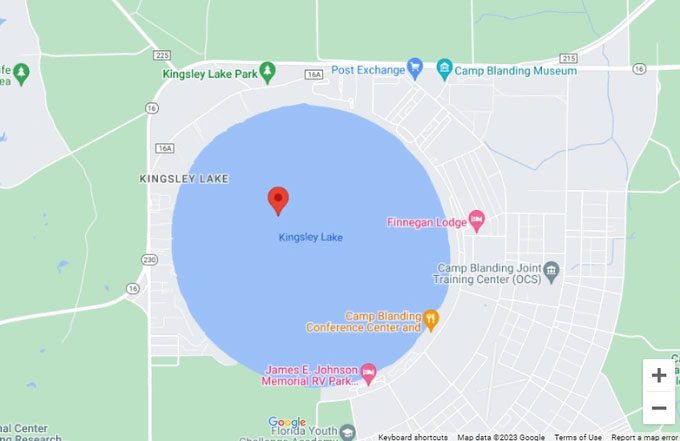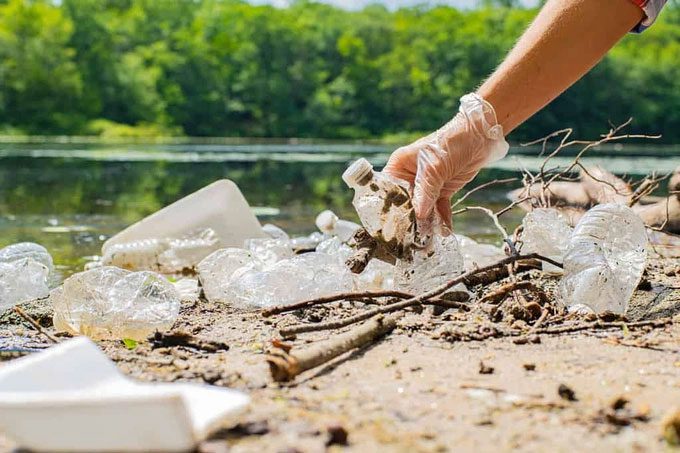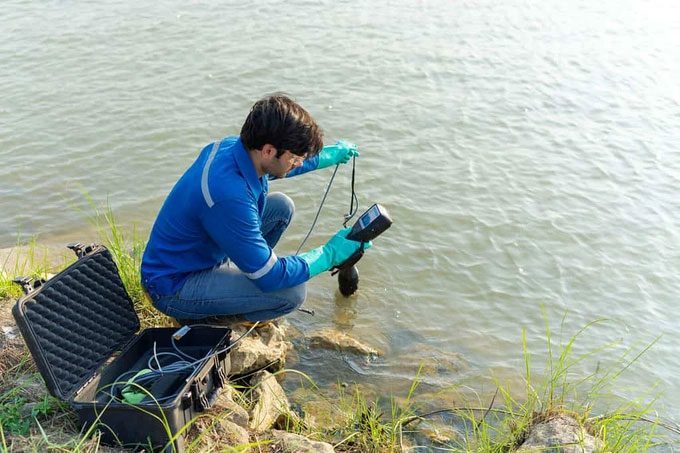Lake Kingsley is unique due to its unusually round shape.
When we think of lakes, we often envision bodies of water in various shapes and sizes. However, Lake Kingsley in Clay County, Florida, USA breaks the fundamental rules of nature with its remarkably round shape.

Lake Kingsley breaks the fundamental rules of nature with its unusual round shape. (Photo: Getty).
Unusually Perfect
According to Earth, when it comes to roundness, you won’t find any natural body of water rounder than Lake Kingsley.
Documents describe Lake Kingsley as having a diameter of approximately 3.2 kilometers and a surface area of about 810 hectares. It is considered the deepest and oldest lake in northern Florida.
Additionally, its elevation of 53.7 meters above sea level makes Lake Kingsley one of the highest lakes in Florida.

Lake Kingsley on Google Maps. (Photo: Google).
Many believe that for Lake Kingsley to have such a round shape, it may have been altered from its original structure. However, in reality, this lake has not been influenced by human intervention.
Throughout history, Lake Kingsley has been a completely natural body of water. There is a hypothesis that the lake was formed as a sinkhole. However, many also believe it may be the result of a more common geological phenomenon.
Regardless of its formation, peculiarities have always been associated with Lake Kingsley. Besides its almost perfectly round shape, the lake also has a remarkably stable water level for centuries.
This is considered quite unusual for the Florida area, which experiences significant rainfall variations throughout the year.
According to a document recorded in 2014, there are about 50 lakes in northern Florida, most of which have average water level fluctuations of around 6 meters within a year. In contrast, Lake Kingsley has fluctuated by a maximum of only 1 meter since monitoring began in 1945.
According to the Florida Geological Survey, the reason Lake Kingsley maintains such a stable water level is due to its efficient surface drainage system. This system effectively helps channel excess floodwater from the lake to surrounding areas.
Moreover, the presence of many shallow waters facilitates the replenishment of the lake, creating an almost perfect balance between water intake and loss.
Numerous Challenges in Maintaining Water Quality

Waste is a serious issue that can negatively impact water quality and the ecosystem at Lake Kingsley. (Photo: Getty).
Regarded as a wonder of geology and history, Lake Kingsley has been an important part of Florida’s landscape for nearly two centuries since its formation. The lake has been intertwined with the lives of local people for hundreds of years, initially designed as a water supply for the community.
However, Lake Kingsley is now gradually transforming into a popular tourist destination, associated with activities such as swimming, sunbathing, kayaking, fishing, and hosting parties. It is estimated that Lake Kingsley attracts an average of 120,000 tourists each year.
This influx has put the lake at risk of significant water quality and ecosystem degradation due to pollution. An alarming amount of non-biodegradable materials such as aluminum cans, plastics, and glass have prompted the Kingsley Lake Property Owners Association to issue warnings in 2015.

State and federal agencies are working to preserve Lake Kingsley through scientific research and monitoring programs. (Photo: Scitechdaily).
This impact is significant, as Lake Kingsley has been classified as a low-nutrient lake due to its clear water, sandy bottom, and very low productivity of flora/fauna. Statistics show that about 20% of lakes in Florida belong to this category.
Lake Kingsley currently provides habitat for species that are endangered or threatened, such as the bald eagle, cottonmouth snake, and Florida black bear. However, invasive plants and animals can outcompete native species for resources.
According to researchers, this leads to a decline in biodiversity and could potentially cause irreversible damage to the environment in the area.
Additionally, fertilizers from agricultural land and stormwater carrying pollutants from urban areas are contributing to the decline in water quality.
This can harm aquatic plants and animals and disrupt the balance of the ecosystem. It could even affect the health of visitors to the lake.


















































